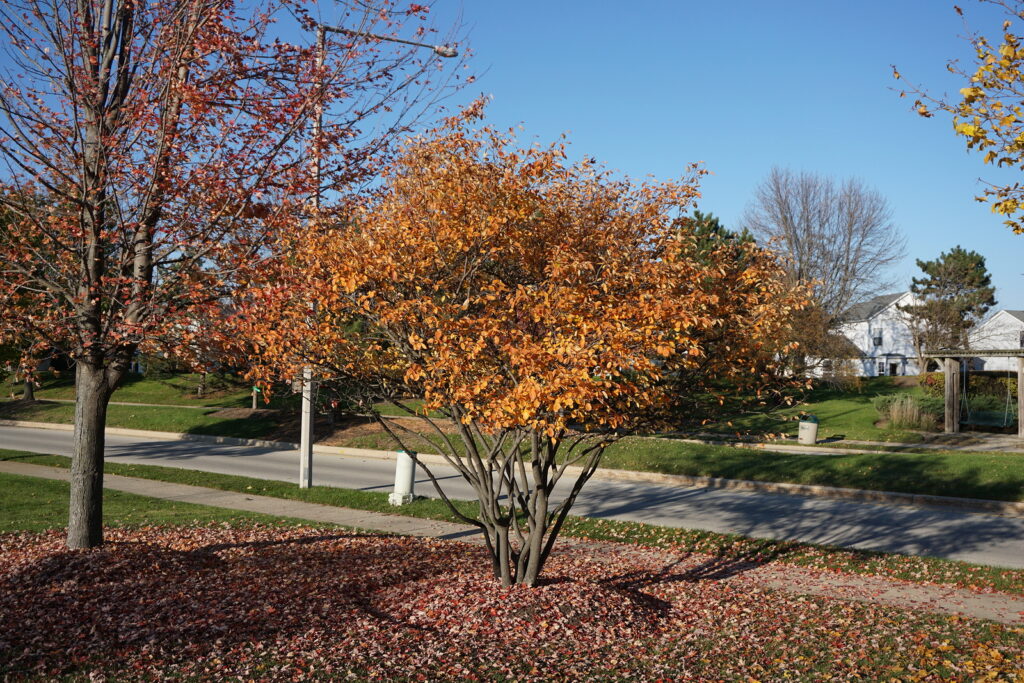Serviceberry, Amelanchier, species include small understory trees and shrubs. All serviceberries have showy white spring flowers followed by red or black berries in midsummer. In autumn, green summer leaves turn gold and red. Serviceberries tolerate a wide range of soils.
Amelanchier is a genus of hardy deciduous shrubs or small trees that include Serviceberry and Juneberry. They are native to North America.
Serviceberry produces racemes of white flowers in early spring. The flowers open in advance or with the unfolding of the leaves. In most species, the young leaves attract attention by reason of a covering of soft woolly white hairs. In fall the tinted foliage adds to the display of that season.
Serviceberries are not particular to soil. Some prefer a moister place than others, but in general, the group is very drought tolerant.
Propagation is by seeds, layers, and in some cases by suckers.
Get to Know Serviceberry
- Plant type: Deciduous tree or shrub
- Growing Zones and range: 4-9
- Hardiness: Hardy
- Height and spread: 15’-20’ tall and wide depending on the variety.
- Foliage: Small, oval, or elliptical leaves with finely toothed margins and downy undersides.
- Flowers: White five-petaled flowers in spring; edible blue berries follow flowers.
- Bloom time: Spring
- Uses: Specimen plant, hedges, shrub borders, woodland areas depending on the variety—see descriptions below.
- Botanical name: Amelanchier spp.
- Common name: Serviceberry
- Origin: Streambanks of Europe, Asia, North America

Where to plant Serviceberry
- Plant serviceberry in full sun.
- Grow serviceberry in average to humus-rich soil that is well-drained. Serviceberry tolerates a variety of soil conditions.
When to Plant Serviceberry
- Set serviceberry in the garden in spring or fall.
Planting and spacing Serviceberry
- Space serviceberry according to the size of the plant at maturity. This will vary be species—see descriptions below.
How to water and feed Serviceberry
- Keep the soil evenly moist for serviceberry. Watering slow and deep will take roots deeper.
- Mulch around serviceberry with aged compost to feed plants.
Serviceberry care
- Plant serviceberry in winter or early spring.
- Pruning is seldom necessary except to shape the tree when it is young. Prune after flowering.
- Mulch around serviceberry while young to keep the soil evenly moist.
Serviceberry common problems
- Serviceberry does not tolerate dry, alkaline soil.
- Avoid overfertilizing serviceberry which can produce succulent growth prone to pests and diseases.
Serviceberry propagation
- Sow serviceberry seed in fall.

Serviceberry varieties to grow
- Allegheny serviceberry, Amelanchier laevis: deciduous tree; Zone 4-8; 40 feet (12m) tall and wide; Zones 4-8; 15’-25’ tall and wide; shrubby tree; white spring flowers followed by bronze leaves in spring, green foliage in summer; blue-black berries attract birds; grows in wet soil; use a small specimen or in woodland gardens.
- Downy serviceberry, Amelanchier arborea: sometimes sold as juneberry; deciduous tree; Zone 4-9; 15-25 feet tall, 20—30’ wide; saucer-shaped white flowers; berries can stain paving; use in small yards; single or multi-stemmed.
- Serviceberry, Amelanchier alnifolia: deciduous flowering shrub; Zone 3-8; deciduous flowering shrub; 8’-12’ tall and wide; white, star-shaped spring flowers; bluish-purple fruit ripens midsummer; rounded leaves are red and yellow in autumn; requires little maintenance; use as a hedge, shrub border, woodland areas.
- Shadblow serviceberry, Amelanchier canadensis: deciduous tree or shrub; Zones 3-8; 15’-20’ tall, 8’-10’ wide; white flowers in spring before leaves; blue-black fruit in summer; yellow-orange leaves in fall; thrives in moist or boggy soil; use in woodlands, waterside areas, boggy soil, seasonal accent,















